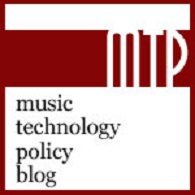Continued from Part 1 and Part 2
A Nashville first-call session musician and hit songwriter asked me once, if I get double scale when I play a session, why can’t I get double stat when I write a hit? Good question. Let’s call that campaign #doublestat.
The American Association of Independent Music, the independent label trade association, filed comments with the Copyright Royalty Board opposing increasing the mechanical royalty to songwriters from the “frozen rates” to the 12¢ (plus cost of living adjustment) settlement rate of the participating record companies with the NMPA and NSAI. I wrote a reply to the A2IM comment that was timely filed with the CRB–barely. I will repost that comment in a few parts here on MTP. As I had about 10 minutes to write the comment due to the lateness of the A2IM filing, I will add some bracketed language to make it a bit less inside baseball.
Unfortunately, A2IM chose not to participate in the Phonorecords IV proceeding and came in a bit late to the party complaining of the check. Nobody stopped them from participating; it appears they put it all on red and it came up black. This is important because unlike independent songwriters who cannot afford the cost of participating at the CRB hearings, A2IM could have participated but chose not to.
As I told the Judges in my comment, I will focus on a few issues raised by A2IM regarding the CRB settlement process in general, the penny rate structure of the mechanical royalty system in the United States, and their proposal that mechanical licensing for physical configurations be handed over to the Mechanical Licensing Collective.
A2IM raises an interesting point that mechanical rates should be different for new releases than for catalog titles. It sounds like they are asking for songwriters on new releases to take an even greater haircut than they already do given the effect of controlled composition clauses–which are justified by the same “investment” (largely recouped from artist royalties) that would be used to justify a further reduction in rates.
I agree that it is rather insane to expect the Judges to come up with a single rate that treats every song as the same when we all know that’s not true and never has been true.
Accordingly, a hit songwriter should be able to charge a higher rate for new releases because after all, the statutory rate is the “minimum”. Why shouldn’t a hit songwriter be able to charge, say, double statutory for new releases, particularly if they are being courted to provide an unproven artist with a song for a single (often already produced). So while there may well be support for rejecting what A2IM describes as a one-size-fits-all approach, it may not come with the result they are looking for.
It must also be understood that when A2IM asks the Copyright Royalty Board to change the entire century-old mechanical royalty rate from an inflation-adjusted fixed penny rate to a percentage of wholesale is a vast undertaking. That’s why I made the following general comment:
As a general comment, all of these ideas must be examined under the authority delegated to the CRB by Congress, particularly in light of the Supreme Court’s recent ruling in West Virginia et al v. Environmental Protection Agency et al. At first blush, it appears to me that all of these ideas, whatever one thinks of the merits, will require Congress to act.
Mechanical Licensing Collective
The idea that the MLC will just take over the mechanical licensing process for configurations that Congress specifically held back from their portfolio supports the idea that Congress would need to act in order to accomplish what A2IM wants to do.
I would respectfully point out to the Judges that the MLC has been sitting on top of at least $500,000,000 of other people’s money on the streaming side for a year or more and still can’t manage to get it matched and most importantly paid. There is also a growing anecdotal belief in the indie publisher community who actually deal with the MLC that there is no musical works database constructed as instructed by Congress—that database appears to be entirely resident at HFA, an MLC vendor. That seems odd and would be a good question for the Judges to ask of the MLC at the next administrative assessment.
Plus, the MLC will not be able to do this additional work on physical accounting for free. I simply cannot imagine that the DLC will welcome the opportunity to provide free accounting services for access to the compulsory license when their own members pay up front a share of the millions that have vanished into the MLC in return for what I cannot say.
We must ask that if the A2IM members cannot afford the modest increase in mechanical royalties for their own songwriters—many of whom are their own artists—how will they afford a share of the administrative assessment plus the transaction costs of switching over to an entirely new accounting system plus what will almost certainly be frequent audits by the MLC.
Conclusion
In short, while A2IM’s comments are well-intentioned and I understand that they feel overlooked in the process, believe me they are not alone. There are a lot of people in the community who take their objections to heart and are willing to parlay about all these ideas in the future. Unfortunately, I don’t think there is support for derailing the process at the 11th hour which should come as no surprise to anyone.
